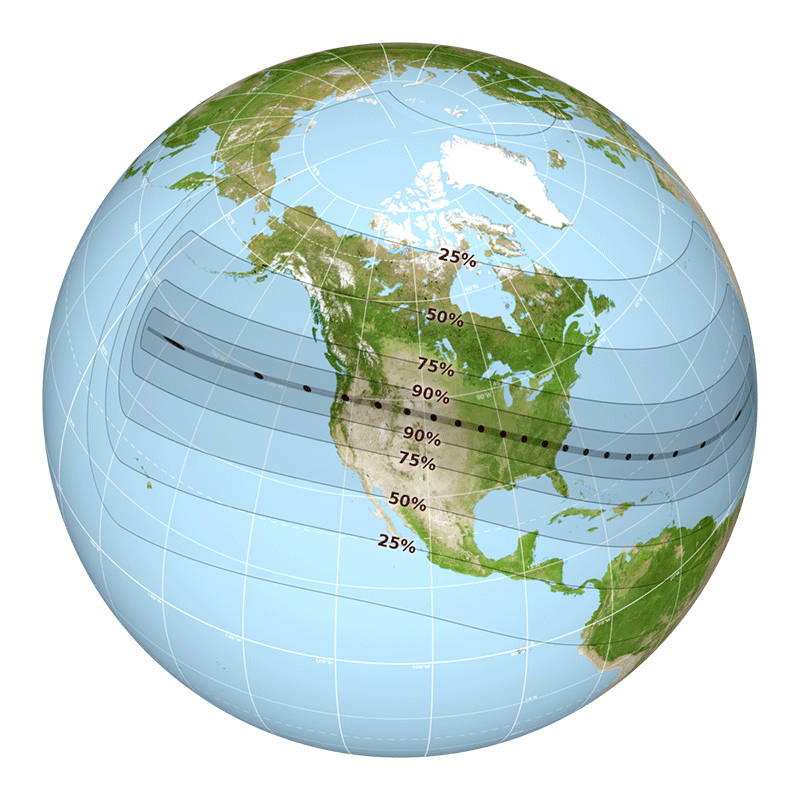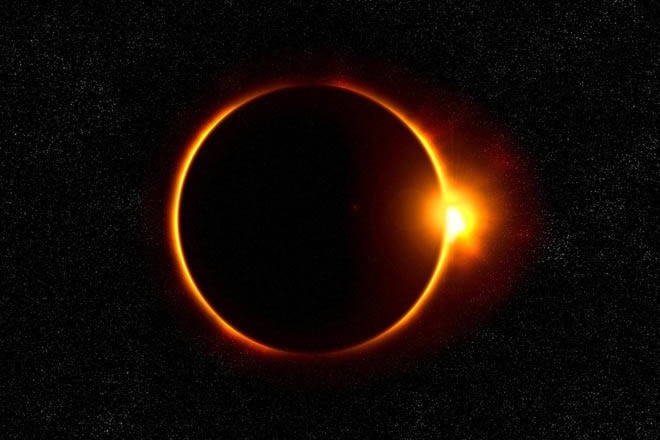Prince Rupert’s reputation as Canada’s overcast capital will likely reign true during Monday’s solar eclipse.
“The way things are shaping up in and around Prince Rupert, it’s not going to be the best of viewing, unfortunately,” Environment Canada meteorologist Ross MacDonald says. “There’s a progressive pattern of frontal systems, and unless we see a gigantic ridge of high pressure that weather will hold out. It looks like it’s just not in the cards.”
Viewers might have better luck in Terrace, but the same frontal system is also expected to bring clouds from the coast. Further east, heavy smoke from this year’s wildfires may further obstruct viewing options. In fact, MacDonald says, with the mix of smoke and cloud forecasts, the nearest place for any British Columbian to view the eclipse may be Washington State.
Whether or not Rupertites can actually see the sun on Monday, we can expect a slight shift in light beginning at 9:13 a.m. as the moon passes between the earth and sun. Over the next 65 minutes its shadow will reach a maximum depth of 70 per cent totality at 10:18 a.m. for about two minutes. It will then begin to wane until ending by 11:28 a.m., according to Blair Stunder, president of the Prince George Astronomical Society.
“You won’t notice it too much at first, but then you’ll really notice it as it reaches 70 per cent,” Stunder says. “It’s pretty weird. It’s almost like sunrise or sunset, with that darkening coming out of nowhere.”
Totality will travel across the contiguous United States beginning 9:19 a.m. on the Oregon coast, and then cutting diagonally down until exiting South Carolina to the Atlantic Ocean. News media across the United States are reporting hotels are fully booked in almost every hotel across the path of totality.
Even though 70 per cent of the sun will be blotted out, without cloud cover only a fraction of its light is needed to cause damage to the retinas. If viewers don’t have glasses made specifically for eclipse viewing, allowing in only .03 per cent of available sunlight, Number 14 welding lenses will work equally well.
The next total solar eclipse on the continent will occur April 8, 2024, beginning in Mazatlan, Mexico, then arching northeast through the U.S., past Toronto and to the Maritime coast.
Check in with thenorthernview.com for updates.

